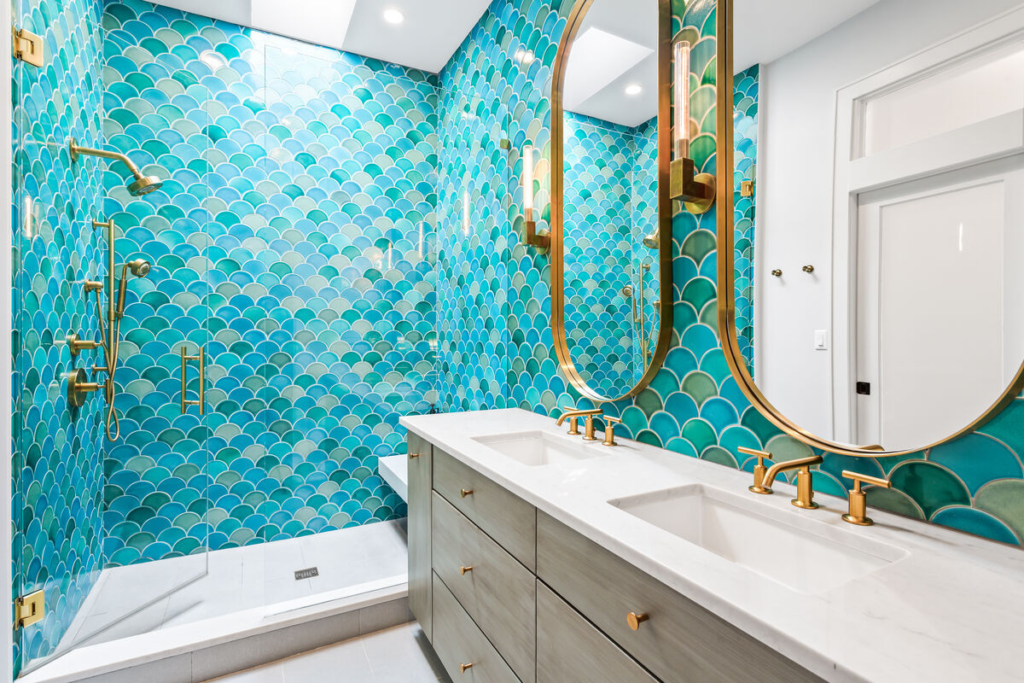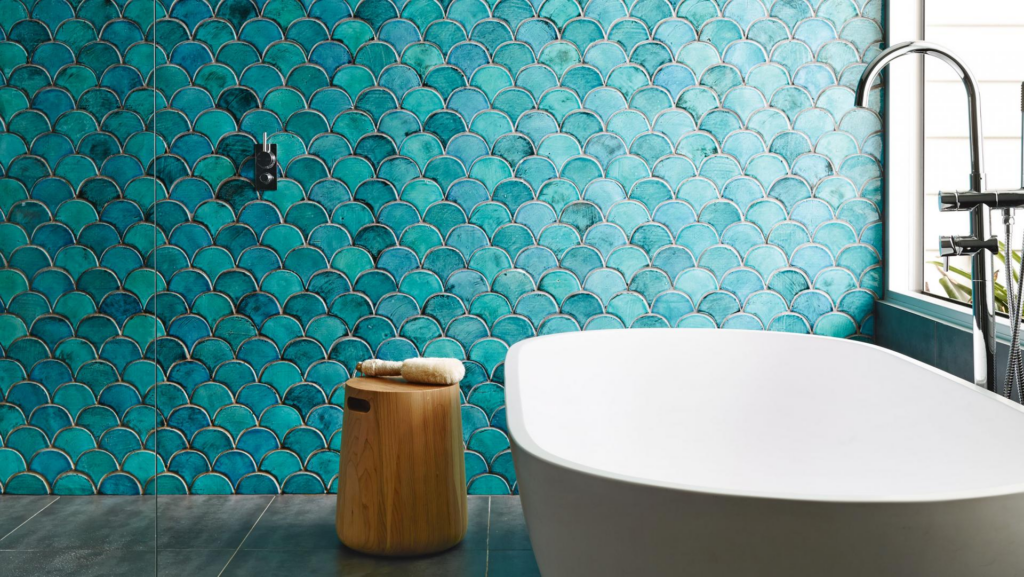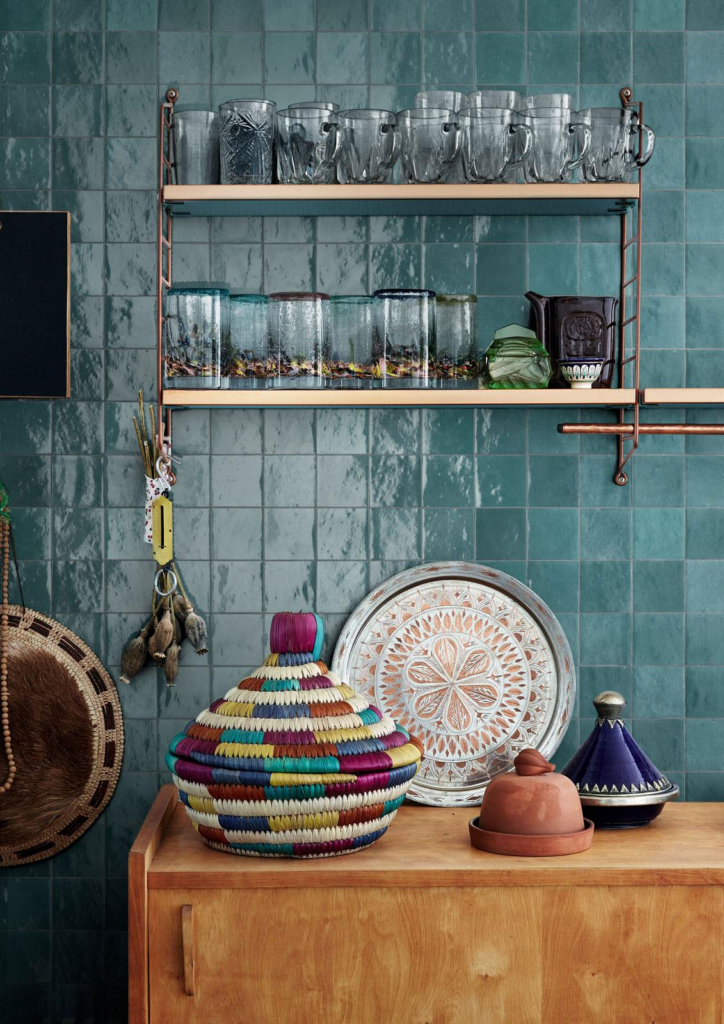What does turquoise mean?

Vibrancy, energy, freshness and a cool softness to the eye is what turquoise Moroccan tiles bring to the table. It has a warming sea cool iciness to it, with a pop that helps to bring alertness and attention and when used with other colours you can avoid it feeling too dominant, like you would get from a Moroccan red tile.
Neither does it have the regal, elite look a dark navy blue tile would, instead there is this feisty young energy about it, and the lighter in shade you go the more you see that youthful softness overtake, which makes it easier on the eye and takes a more subtle, reserved tone and approach – brilliant if you want a slight contrast without being confrontational.

Turquoise blue can be versatile and helps rooms capture a modern look with a range of emotions from a direct boldness all the way down to a tender minimalism. This hinges on the shades and contrasts you go for. When it is a deeply rich turquoise, this helps with focus but also intrigue whilst a softer turquoise triggers calming effects.
Underneath all this is the feeling of refreshment, youth and freshness which helps to re-invigorate the mind and body, and is also why it is important when using turquoise that you are measured and controlled when applying it across walls, bathrooms and kitchens in order to keep a level of elegance and balance.
How to use turquoise Moroccan tiles?
Turquoise is a strikingly beautiful, deep and focused colour – however with anything, too much of it can leave a bad taste and become too overbearing. So your choices here depend on which tone and shade you go for, coupled with contrasts with colours like white, gold and green.
Now as mentioned, minimal looks do fair better and require less attention e.g. lighter shades but they do not have that captivating and intriguing vibe that a deep turquoise Moroccan would give. That is why, unless you want those subtle, pastel like shades which communicate calmness you should absolutely go for a rich, vibrant turquoise that stands out as a statement piece (which it naturally does!).

With a statement piece you can have it in the kitchen, bathroom or even hallway, but most important, it is a central and localised piece of Moroccan turquoise tile complimented by nearby colours and accessories. You really want to take advantage of those accessories in order to elevate, entice and add to the effect – this is not a place where you want to shy away from to make sure you maintain that vibrant freshness.
Combined with a elements that are identifiable and practical – otherwise they will get lost and the sense of the room can almost be absorbed into the colour.
Now, whether you go for fish scales or zellige blocks, turquoise Moroccan tile have a depth to them that is like watching the ocean. So whilst you may be considering patterns, getting textured, multi-shaded tiles not only adds character and depth but pulls you in, which is why it is so fascinating to look at and speaks volumes to its richness. But the catch here is too much of that and you can get lost and be overwhelmed.
With a central piece in the kitchen, hall way or bathroom, columns in functional places are widely used, from floor to ceiling or floor to an arch like curve. 4 or 5 rows of Moroccan tiles are also perfect for blocked out strips in the kitchen or bathroom and help to generate a sense of energy and movement which is perfect in those practical settings.
Contrasts are everything here, whilst Moroccan turquoise tiles speak volumes, you need well balanced and well placed elements to really compliment and build out the rest of the experience. Turquoise is very much stamped and left its mark, but you do still need to consider the canvas e.g. white or grey which it needs to stand up from as well as well contrasted taps and sinks.
The point around contrast is not just that colours are opposite to each other so they stand out from each other, but that they compliment and blend well whilst also being visibly identifiable. Turquoise in most cases is very vibrant or rich, so thought needs to be given as to how you can isolate those elements so that they also speak their own language.
This can be achieved whether its through borders, specific area divisions or even the complimentary styles of products and items – being deliberately specific at an early stage can help define a well-rounded experience with such a vibrant colour.
Examples of turquoise Moroccan tile



